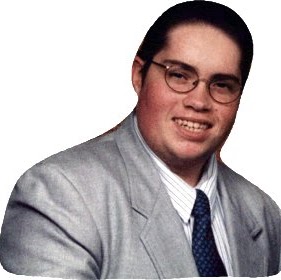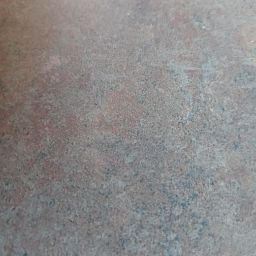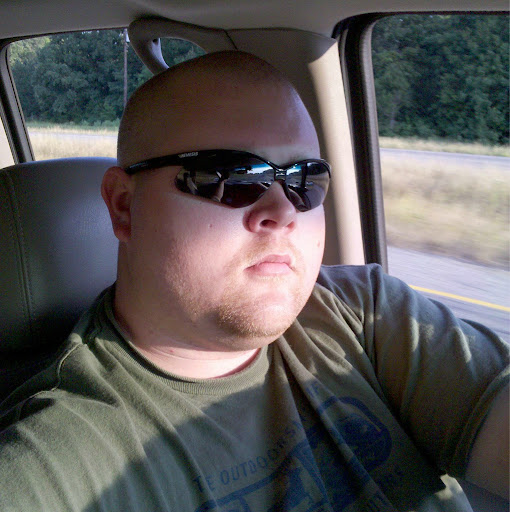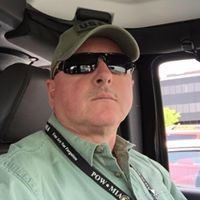Michael A Fair
age ~50
from Candor, NC
- Also known as:
-
- Michael Sair
- Mike Fair
Michael Fair Phones & Addresses
- Candor, NC
- Worthington, PA
- Seagrove, NC
- 404 W Wayne St, Butler, PA 16001 • (724)8221096
- Lyndora, PA
- Kittanning, PA
- Ford City, PA
Work
-
Company:Keller Williams - Pittsburgh West
-
Address:Pittsburgh, PA
-
Phones:(412)7880888
Specialities
Buyer's Agent • Listing Agent
Real Estate Brokers

Michael D Fair, Pittsburgh PA Agent
view sourceWork:
Keller Williams - Pittsburgh West
Pittsburgh, PA
(412)7880888 (Phone)
Pittsburgh, PA
(412)7880888 (Phone)
Us Patents
-
Phased Array Ultrasonic Testing System And Methods Of Examination And Modeling Employing The Same
view source -
US Patent:7428842, Sep 30, 2008
-
Filed:Jun 20, 2005
-
Appl. No.:11/157050
-
Inventors:Michael Fair - Oakmont PA, US
Waheed A. Abbasi - Murrysville PA, US
Michael J. Metala - Murrysville PA, US
Walter Matulewicz - New Kensington PA, US -
Assignee:Siemens Power Generation, Inc. - Orlando FL
-
International Classification:G01N 29/26
G01N 29/24
G01N 29/06 -
US Classification:73626, 73625, 73628, 73602
-
Abstract:A phased array ultrasonic testing system is for examining turbine disc bores and blade attachments for discontinuities, such as stress corrosion cracking. The system is particularly suited to perform an accurate and efficient inspection of components despite their having a relatively complex geometry, such as axial entry blade attachments and bores of associated discs. The system includes a control system with a computer and a controller for programming, emitting, and steering an ultrasonic beam via at least one two-dimensional phased array probe, thereby precisely inspecting the area of interest while simultaneously accommodating the aforementioned complex geometry of the disc or blade attachment. Computer control of the beam permits the number of inspection locations and the number of different probe wedges to be reduced providing for an efficient, timely inspection. Methods of profiling and examining turbine components of known and unknown geometries, are also disclosed.
-
Ultrasonic System For Determining The Profile Of Solid Bodies
view source -
US Patent:50294768, Jul 9, 1991
-
Filed:Sep 7, 1989
-
Appl. No.:7/404136
-
Inventors:Michael J. Metala - Murrysville PA
Lee W. Burtner - Elizabeth Township, Allegheny County PA
Michael F. Fair - Oakmont PA -
Assignee:Westinghouse Electric Corp. - Pittsburgh PA
-
International Classification:G01B 1504
-
US Classification:73620
-
Abstract:A system for determining the cross sectional profile of an object (24) having two opposed surfaces (26,28), includes: an ultrasonic transducer (16) having a reference surface (20) and arranged to emit and receive ultrasonic energy via the reference surface (20); a thickness determining unit (60) connected to the transducer (16) for causing the transducer (16) to emit ultrasonic energy via the reference surface (20) and for detecting reflected ultrasonic energy received by the transducer (16) via the reference surface (20) in order to derive indications of the distance between the reference surface (20) and an ultrasonic energy reflecting surface facing the reference surface (20); a carriage (2) supporting the transducer (16); a guide member (4) defining a linear travel path having a reference point and supporting the carriage (2) for movement along the travel path; a position determining unit (12,44,62) operatively associated with the carriage (2) for deriving an indication of the location of the carriage (2) along the travel path relative to the reference point; elements (32,34) for securing the guide member (4) to the object (24) so that the linear travel path extends along one of the two opposed surfaces (26); and a signal processing device (64) coupled to the thickness determining unit (60) and the position determining unit (12,44,62) for producing representations of the distance between the opposed surfaces (26,28) of the object (24) correlated with the location of the carriage (2) relative to the reference point when the reference surface (20) is in contact with one of the two opposed surfaces (26,28).
-
Method For Ultrasound Scanning Of A Weld Buildup
view source -
US Patent:20160123932, May 5, 2016
-
Filed:Oct 30, 2014
-
Appl. No.:14/527826
-
Inventors:- Orlando FL, US
Michael F. Fair - Oakmont PA, US
David S. Segletes - York SC, US
Erik A. Lombardo - Sharon SC, US
Scott M. Westby-Gibson - Charlotte NC, US
Waheed A. Abbasi - Murrysville PA, US -
International Classification:G01N 29/11
G01N 29/04
F01D 21/00 -
Abstract:A method for scanning a weld buildup formed on a circumferential portion of a disc for a steam turbine. The method includes providing an ultrasound probe for generating at least one ultrasound beam sweep. The circumferential portion is scanned with a first beam sweep oriented in a first beam orientation to detect a first flaw type in the weld buildup. The circumferential portion is also scanned with a second beam sweep oriented in a second beam orientation to detect a second flaw type in the weld buildup. Further, the circumferential portion is scanned with a third beam sweep oriented in a third beam orientation to detect a third flaw type in the weld buildup. The method also includes rotating the disc about a disc axis during scanning of the circumferential portion and moving the first, second and third beam sweeps in a direction parallel to the disc axis during scanning.
-
Method And System For Immersion Ultrasound Inspection Including Within Downwardly Opening Cavities
view source -
US Patent:20150260690, Sep 17, 2015
-
Filed:Mar 12, 2014
-
Appl. No.:14/206287
-
Inventors:- Orlando FL, US
Michael F. Fair - Oakmont PA, US
Francisco J. Jaimes - Jeannette PA, US
Waheed A. Abbasi - Murrysville PA, US
James A. Bauer - Gibsonia PA, US -
Assignee:Siemens Energy, Inc. - Orlando FL
-
International Classification:G01N 29/24
G01N 29/26 -
Abstract:Immersion ultrasonic NDE is performed within cavities of inanimate objects, having downwardly directed openings, such as for in situ inspection of steam inlet sleeves and steam inlet necks within steam turbine housings. A shaft assembly has one or more single angle or phased array ultrasonic probes that are affixed on an upstream or distal end. An inflatable bladder is affixed to the shaft on a proximal end of the shaft assembly downstream the ultrasonic probe(s). The shaft is inserted into the cavity opening, and the bladder is inflated to form a fluid tight seal against the cavity. Immersion fluid is introduced upstream the bladder in the volume occupied by the probes. Immersion ultrasonic inspection of the object is then performed.
Name / Title
Company / Classification
Phones & Addresses
MC-FAIR PROPERTIES, LTD
SOUTHERN OHIO PERFORMANCE SPORTS LLC
Isbn (Books And Publications)


License Records
Michael Fair
License #:
2014116 - Expired
Issued Date:
Dec 4, 2014
Expiration Date:
Dec 4, 2015
Type:
Temporary Permit
Resumes

Michael Fair
view sourceLocation:
United States
Googleplus

Michael Fair
Relationship:
Single

Michael Fair

Michael Fair

Michael Fair

Michael Fair

Michael Fair

Michael Fair

Michael Fair
Myspace

Michael Fair
view source
michael fair
view sourceLocality:
any place i hang my hat, Antigua and Barbuda
Gender:
Male
Birthday:
1933

Michael Fair Sr.
view source
Michael Paul Fair
view source
Michael John Fair
view source
Michael Eddie Fair
view source
Michael Carlton Fair
view source
Michael Joseph Fair Jr.
view source
Michael Lawrence Fair
view source
Michael Wayne Fair
view sourceClassmates

Michael Fair
view sourceSchools:
Winter Street Elementary School Hagerstown MD 1975-1977, Surrey Elementary School Hagerstown MD 1977-1978, Maugansville Elementary School Maugansville MD 1978-1981, Snowflake Intermediate School Snowflake AZ 1981-1982, Western Heights Middle School Hagerstown MD 1981-1985, Clear Spring Middle School Clear Spring MD 1982-1982, Washington County Technical High School Hagerstown MD 1987-1989

Michael Fair II
view sourceSchools:
Rogers Elementary School Auburn Hills MI 1986-1991, Madison Junior High School Pontiac MI 1991-1994
Community:
Lynn Williams

Michael Fair
view sourceSchools:
Hinds Junior College Raymond MS 2001-2005
Community:
Linda Bobst, Mary Langfitt, Ted Hayes, Steve Ward, Thomas Johnson

Michael Fair
view sourceSchools:
East Hill Christian High School Pensacola FL 1995-2001
Community:
Rick Johnson, Jennifer Sikes, Melissa Hires

Michael Fair
view sourceSchools:
Pleasant Valley High School Chico CA 1997-2001
Community:
Karrie Lange, Theresa Fegley, Terry Thompson, Angela Quinn

Michael Fair
view sourceSchools:
Midway Elementary School Kingston TN 1978-1992
Community:
Jason Stansbury, Kim Kammerer, Dana Ward, Ronda Davidson, Jerry Steele, Renea Goss

Michael Fair
view sourceSchools:
West Philadelphia Catholic High School Philadelphia PA 1995-1999
Community:
Sister Angela, Ken Rozzell, Renee Jones

Michael Fair
view sourceSchools:
Deerfield High School Deerfield IL 1965-1969
Community:
Christy Mayo, Bonnie Peters
Youtube
Plaxo

Michael Fair
view sourceLos Angeles, CAFree Software Enthusiast at Fairplay Enterprises
Get Report for Michael A Fair from Candor, NC, age ~50











